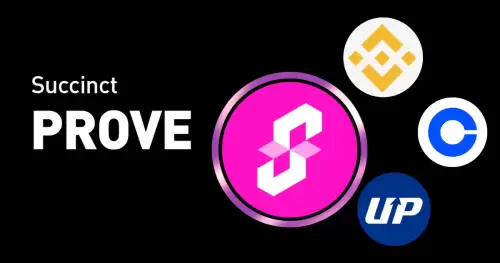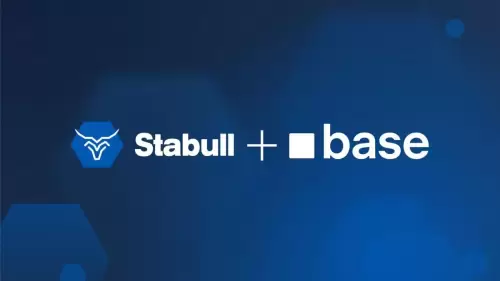 |
|
 |
|
 |
|
 |
|
 |
|
 |
|
 |
|
 |
|
 |
|
 |
|
 |
|
 |
|
 |
|
 |
|
 |
|
Cryptocurrency News Articles
As the Crypto Market Regains Strength, a Silent Threat Resurfaces
May 02, 2025 at 04:15 pm
Binance, one of the leading exchange platforms, warns about the resurgence of scams related to fake tokens.

As the crypto market shows signs of strength again, a silent threat is returning. Binance, one of the leading exchange platforms, issues a stark warning about the resurgence of scams.
Those scams, which often involve fake tokens that are being touted as legitimate projects, are snares that are impacting an increasing number of investors, some of whom are experienced.
In a climate of euphoria and significant capital gains, this disturbing trend raises questions about the role of exchanges in protecting investors.
Fake Tokens: A Threat Identified by Binance
In a message shared on the social network X (formerly Twitter) on May 1, 2025, Binance sounded the alarm to the crypto community about the concerning resurgence of scams.
The message is clear:
"Scams involving fake tokens are on the rise. Fraudsters create fake crypto assets to imitate legitimate assets, then use them to steal funds or data. Stay vigilant. Always be vigilant."
Binance is referring to a growing fraudulent practice. It involves creating fake cryptos by directly copying the name, visual identity, and even the code of existing tokens. The aim is to deceive investors in order to steal their funds or, in some cases, their personal data.
This warning follows others from specialized actors, such as the X account "Susbarium," which is dedicated to the security of the Shiba Inu ecosystem. This account has been denouncing opportunistic attacks.
This time, the aim is to snare users by falsely claiming affiliation with the SHIB community: "some groups attempt to exploit the Shiba Inu ecosystem by launching unofficial tokens while making false claims of affiliation with SHIB."
Such a phenomenon, made possible by the openness of public blockchains, is all the more worrying because it affects all types of users. DEX platforms (decentralized exchanges), where any token can be listed without prior control, offer fertile ground for this type of fraud.
To be precise, fake tokens can take various forms:
* Tokens with names that are very similar to those of known projects, aiming to capitalize on their reputation.
* Tokens that integrate the visual identity of a project (logo, website) to deceive users.
* Tokens whose smart contract code is a copy of an existing token, with additional malicious code to siphon funds.
These practices aim to abuse the trust generated by a project's reputation and can prove to be alarmingly effective, especially with inexperienced or less vigilant users.
Binance's Concrete Recommendations
Faced with this critical situation, Binance also provided a set of technical recommendations for its users. In its post, the exchange emphasizes the importance of systematically verifying a token's contract address, the only unalterable information that allows authenticating a crypto asset.
Binance specifies that "each digital token has an associated contract address" and reminds that this address should always be checked on official sources such as the project's website or platforms like CoinGecko and CoinMarketCap.
Additionally, Binance highlights the use of risk analysis tools that can detect technical anomalies: suspicious contract code, locked liquidity, abnormally low volume, or even non-existent market capitalization.
However, using these tools, such as token scanners, remains challenging for non-technical users. For this reason, the exchange encourages users to stay informed, follow market trends, and strengthen their education on blockchain mechanisms. It is also advised to monitor a token's metrics: a legitimate asset should show consistency between its price, liquidity, and number of holders.
These practical tips are part of a broader strategy aimed at limiting the impact of these scams on investor confidence. While the crypto ecosystem has always attracted fraud attempts during bullish periods, the growing sophistication of the techniques used demands a collective response, combining regulation, project transparency, and user accountability.
In a still young and partially decentralized sector, protection primarily relies on education and vigilance. Will the community be able to mobilize in time against this silent but fearsomely effective scourge?
Disclaimer:info@kdj.com
The information provided is not trading advice. kdj.com does not assume any responsibility for any investments made based on the information provided in this article. Cryptocurrencies are highly volatile and it is highly recommended that you invest with caution after thorough research!
If you believe that the content used on this website infringes your copyright, please contact us immediately (info@kdj.com) and we will delete it promptly.






























































